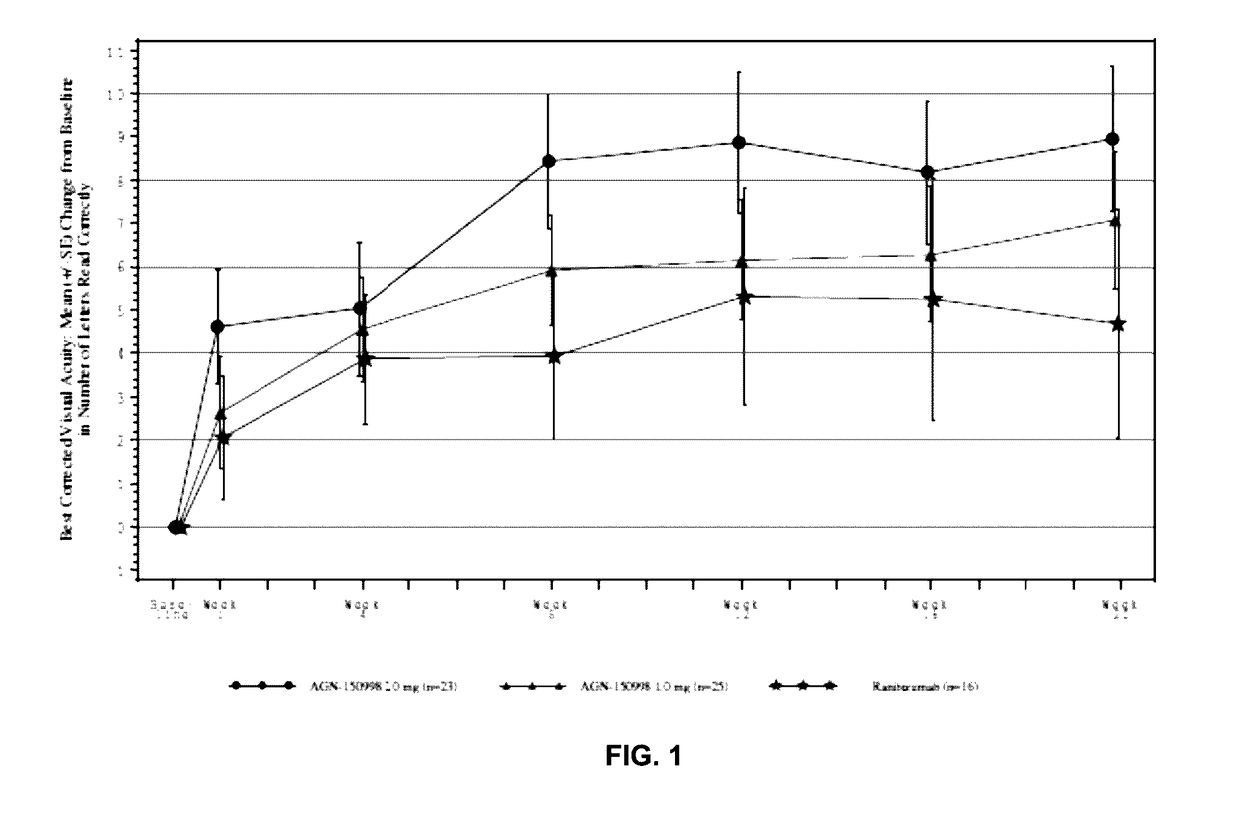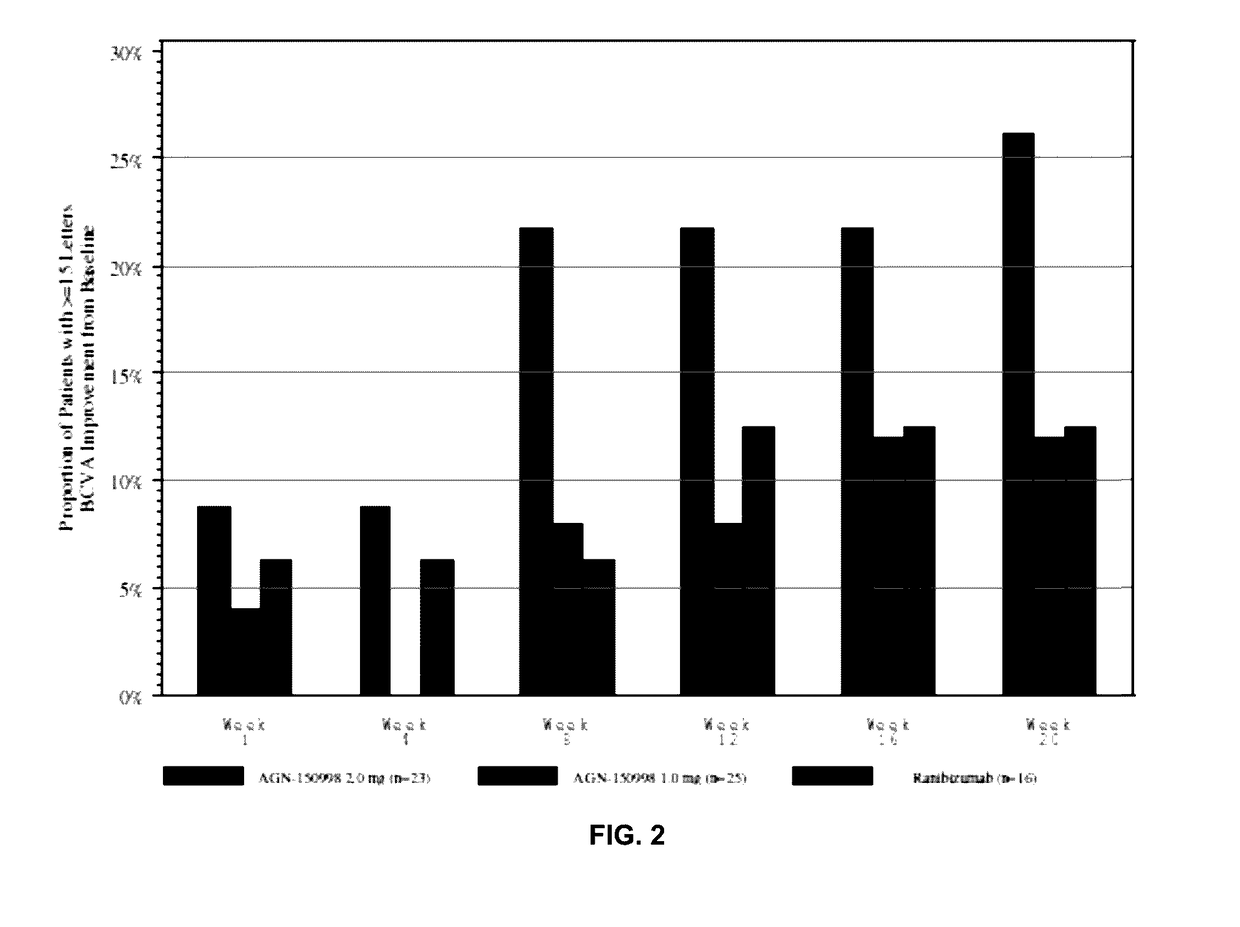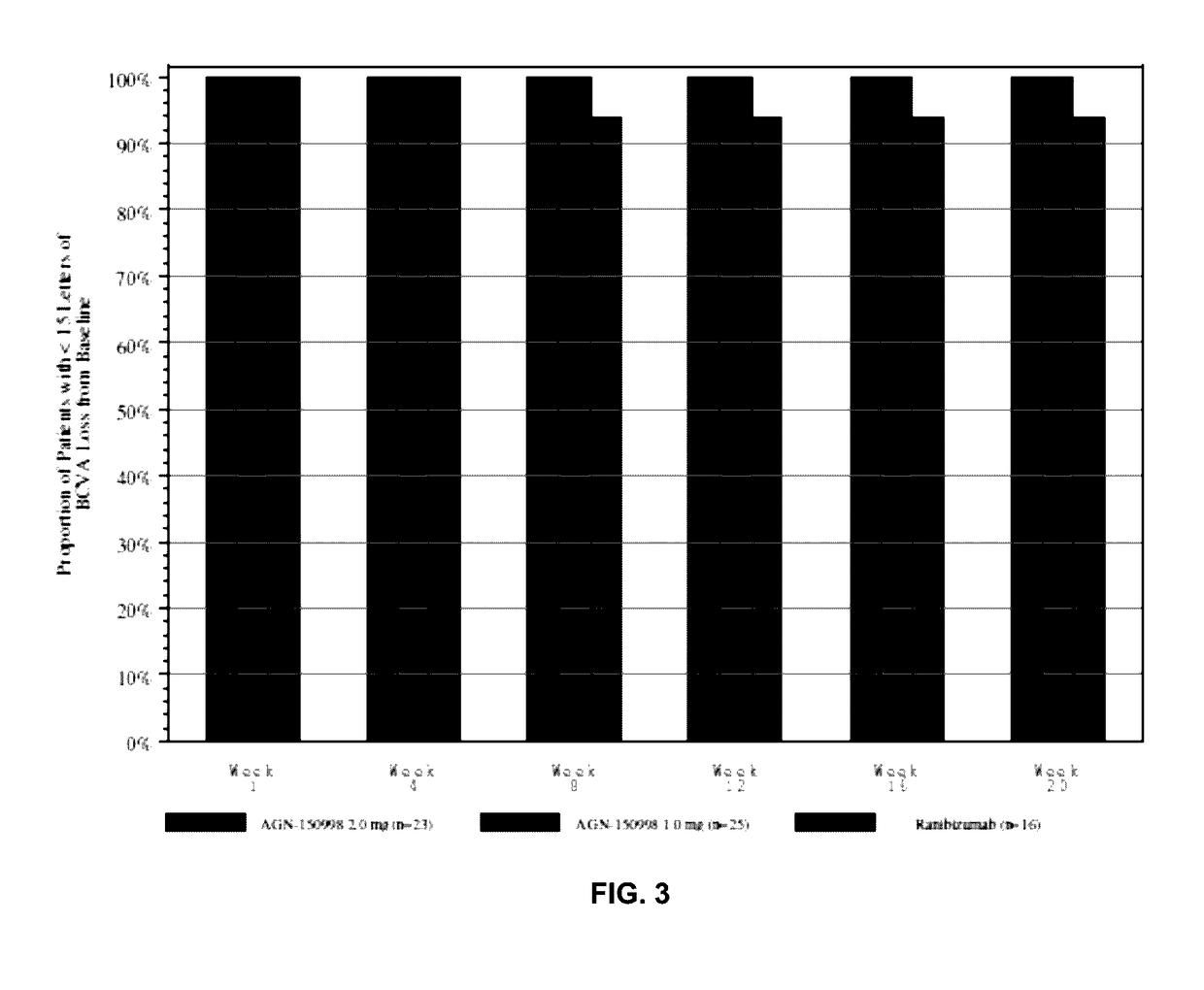Method of treating conditions of the eye with an Anti-vegf darpin
a technology of antivegf and darpin, which is applied in the field of treating conditions of the eye with antivegf darpin, can solve the problems of scar formation in the area that was previously occupied by photoreceptors, retinal diseases, vision impairment and blindness in people, etc., and achieves the effects of improving visual acuity, reducing abnormal retinal thickness, and reducing abnormal fluid in the retina
- Summary
- Abstract
- Description
- Claims
- Application Information
AI Technical Summary
Benefits of technology
Problems solved by technology
Method used
Image
Examples
examples
[0190]The invention is illustrated further by the following examples. The inventors tested abicipar pegol, a binding protein of the invention comprising an ankyrin repeat domain of SEQ ID NO:3, conjugated to polyethylene glycol (the compound has the generic name “abicipar pegol,” occasionally referred to herein as simply “abicipar”).
Overview
[0191]The inventors had previously tested abicipar pegol in an open-label, dose-escalation assessment of safety administered as an intravitreal injection to patients with advanced exudative AMD who were refractory to anti-VEGF therapy. They followed that study with a randomized, double-masked evaluation of abicipar and ranibizumab in treatment-naïve patients with exudative AMD (“the Stage 2 study”). The objectives were to assess the safety and duration of treatment effects with 4.2 mg and 3 mg abicipar on retinal edema and best-corrected visual acuity (BCVA) and to characterize the systemic pharmacokinetic profile of abicipar.
[0192]In this exampl...
PUM
| Property | Measurement | Unit |
|---|---|---|
| Fraction | aaaaa | aaaaa |
| Time | aaaaa | aaaaa |
| Time | aaaaa | aaaaa |
Abstract
Description
Claims
Application Information
 Login to view more
Login to view more - R&D Engineer
- R&D Manager
- IP Professional
- Industry Leading Data Capabilities
- Powerful AI technology
- Patent DNA Extraction
Browse by: Latest US Patents, China's latest patents, Technical Efficacy Thesaurus, Application Domain, Technology Topic.
© 2024 PatSnap. All rights reserved.Legal|Privacy policy|Modern Slavery Act Transparency Statement|Sitemap



